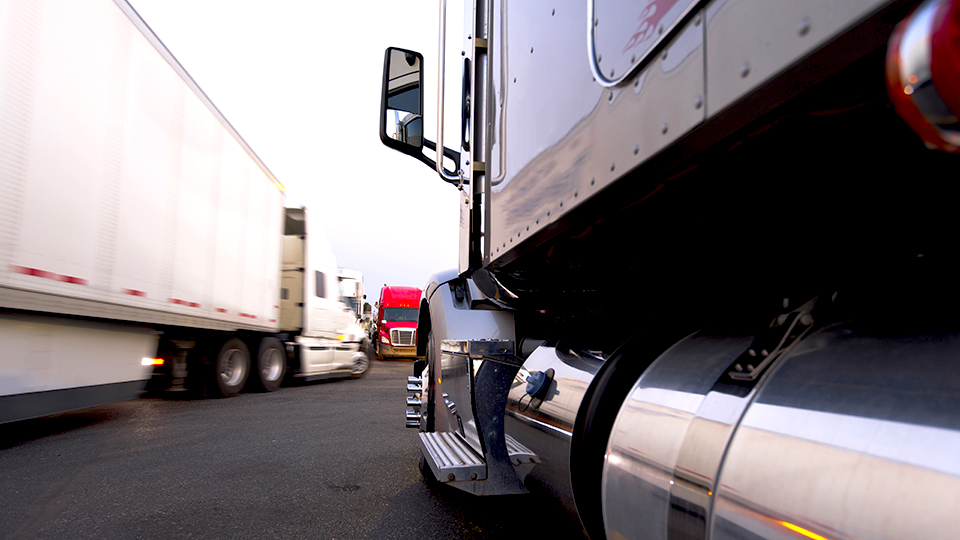The FMCR identifies the required driving knowledge and skills for a commercial driver. The required knowledge driving rules is listed under Section 383.111. A driver must have knowledge of “[b]asic control. The proper procedures for performing basic maneuvers, including: (iv) Turning the vehicle, e.g. basic rules, off tracking, right/left turns and right curves. 383.111(a)(4). In addition, a driver must know how to conduct a visual search. “The importance of proper visual search, and proper visual search methods, including: (i) seeing ahead and to the sides, (ii) use of mirrors; and (iii) seeing to the rear.” 383.111(a)(7). Drivers must also exercise space management. “The procedures and techniques for controlling the space around the vehicle, including: (i) the importance of space management; (ii) Space cushions, e.g., controlling space ahead/to the rear; (iii) Space to the sides; and (iv) Space for traffic gaps.” 383.111(a)(10).
Commercial truck drivers must have knowledge of “Hazard Perceptions. The basic information and clues for recognition of hazards including: (i) Road characteristics; and (ii) Road user activities.” Section 383.111(a)(13). The required skills of a driver include the “[a]bility to choose a safe gap for changing lanes, passing other vehicles, as well as for crossing or entering traffic.” Section 383.113(c)(4).
To FMCR identifies the important areas to evaluate the conduct of a commercial driver. Each state is required to provide an FMSCA preapproved driver information manual to a CDL applicant. Section 383.131(a)(1). The CDL and Industry Commercial Driver manuals provide the techniques, methods and industry standards to comply with FMCR. The J. J. Keller Tractor Trailer Driving Manual is based on the Federal Highway Administration Model Curriculum and follows the Professional Truck Driver Institutes curriculum standards. The following instructions are found in the J.J. Keller Tractor-Trailer Driver Training Manual:
Scanning to the sides
When on the road, you should be periodically scanning to the sides, but there are certain situations where scanning to the sides is critical including crosswalks, intersections and school zones. Pg. 126.
. . .
Use of Mirrors
Mirrors provide your only view of the rear of your vehicle. You must check your mirrors before changing speed or position in traffic. You should check your mirrors about every four seconds. Also, use mirrors to assist in checking your vehicle’s blind spots. Pg. 126.
. . . . .
Remember that mirrors do not allow you to see everything. There are blind spots on both sides of your vehicle. This makes lane changes, passing, and other maneuvers risky. Tight turns can also pose a problem. You can’t see smaller vehicles or pedestrians that are next to the vehicle. Along with using your mirrors, signal and wait a moment before changing directions or lanes. Pg. 127.
Adjusting Mirrors
Proper adjustment is important. It ensures that you have the best view possible to the sides and rear of your vehicle.
Pg. 128.
Seeing to the Rear
Continually use your mirrors to monitor the rear of your vehicle . . .
Use your mirrors to check for vehicles beside your tractor and trailer. Be alert. Know what is always going on.
Use your mirrors when changing lanes. Check your mirrors:
- Before you change lanes (making sure there’s room to change lanes);
- After you signal (Making sure no one/nothing moved into your blind spot);
- Right after you begin the lane change (making sure your path is still clear); and
- After you complete the lane change.
Also check your mirrors when you slow down, merge or turn.
The techniques that are instructed under the CDL manuals for Maryland and Virginia are consistent and similar. All industry and state CDL manuals instruct drivers as to the techniques and methods that are to be used to comply with the required commercial driver skills of Section 383.111.


